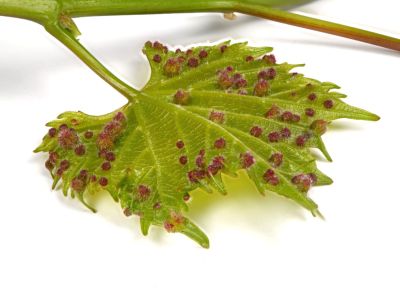How to Recognize Phylloxera Symptoms
Grape root aphids are not actually aphids. They are simply small insects that look like aphids and cause great destruction to their host plant – grapes. Grapevine aphids are scientifically known as grape Phylloxera or Daktulosphaira vitifoliae. They are small insects, which overwinter as nymphs on grape roots beneath the soil. In spring, when soil temperatures stay consistently around 60 degrees F. (16 C.), the insects become active, feeding on grape roots, maturing into adults, and then breeding. The female crawls up to the foliage where she creates galls to lay eggs in. These wart-like galls may be the only visible phylloxera symptoms. When the eggs hatch, young grape root aphids make their way back down to the roots or move onto the roots of other grapevines where the cycle continues. Occasionally, winged types of phylloxera are seen. Meanwhile, male and young phylloxera feed on the roots of grapevines, causing young root shoots to swell and turn yellow. Older roots that are fed on by grape root aphids will turn mushy and die. These two grape root aphid problems occur from a secondary fungal infection that the phylloxera inject as they feed. When these grape root aphid problems get out of hand, affected vines will grow stunted and produce little to no fruit. Phylloxera grape root aphids specifically infect roots in clay soil. They are not a pest in sandy soils.
Grape Root Aphid Treatment
When treating grape root aphids, chemical controls are oftentimes ineffective because the insecticides cannot penetrate heavy clay soils or leaf galls. A foliar insecticide can be used in spring, weekly or biweekly, to kill the insects as they move from roots to leaves. However, the best offense is a good defense. When purchasing grapevines, select only grafted phylloxera resistant varieties. Grapevine aphids can also be transported from plant to plant on shoes, clothing, tools, and equipment. Therefore, it is best to only care for one plant at a time and then properly sanitize everything before working with another plant.
